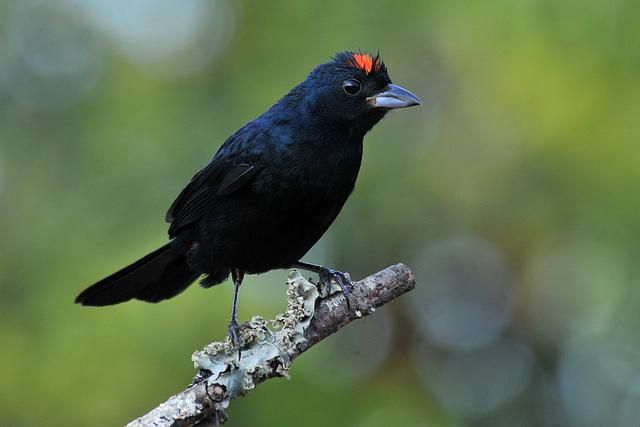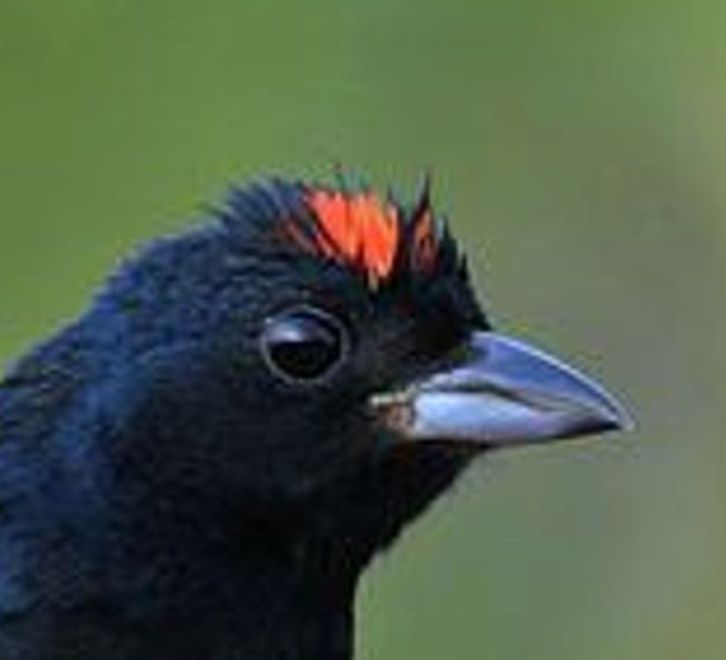when you are a midnight volcano
Apr. 3rd, 2024 09:17 pmLook at this bird that came up on Aves do Brasil:

Doesn't he look like a volcano at night, with lava just waiting to overbrim?


I feel it's such a good representation of how we all are. All our hot feelings at the top of our heads.
In English he's called a ruby-crowned tanager. His Brazilian name, tiê preto, translates as "black tiê" (and the word "tiê" comes from a Tupi word, "ti'ye," but my very cursory investigations haven't turned up what that means). It's funny that the English name looks at that one bright patch and the Brazilian name looks at the rest of him.
In other news, sometimes negative reviews can make you want to read something. Someone I follow on Goodreads wasn't a fan of The Navigating Fox, but their description of it intrigued me--a world with talking animals who interact more or less as peers with humans (though, as in Narnia, there are also animals who don't talk). The main character is the titular Navigating Fox, Quintus Shu'al, who starts out the story in disgrace. Fingers crossed that the story ends up being good.
The cover is really pretty, too. Not that that's a reason to choose a book, I realize, but it makes it fun to look at.


Doesn't he look like a volcano at night, with lava just waiting to overbrim?


I feel it's such a good representation of how we all are. All our hot feelings at the top of our heads.
In English he's called a ruby-crowned tanager. His Brazilian name, tiê preto, translates as "black tiê" (and the word "tiê" comes from a Tupi word, "ti'ye," but my very cursory investigations haven't turned up what that means). It's funny that the English name looks at that one bright patch and the Brazilian name looks at the rest of him.
In other news, sometimes negative reviews can make you want to read something. Someone I follow on Goodreads wasn't a fan of The Navigating Fox, but their description of it intrigued me--a world with talking animals who interact more or less as peers with humans (though, as in Narnia, there are also animals who don't talk). The main character is the titular Navigating Fox, Quintus Shu'al, who starts out the story in disgrace. Fingers crossed that the story ends up being good.
The cover is really pretty, too. Not that that's a reason to choose a book, I realize, but it makes it fun to look at.












